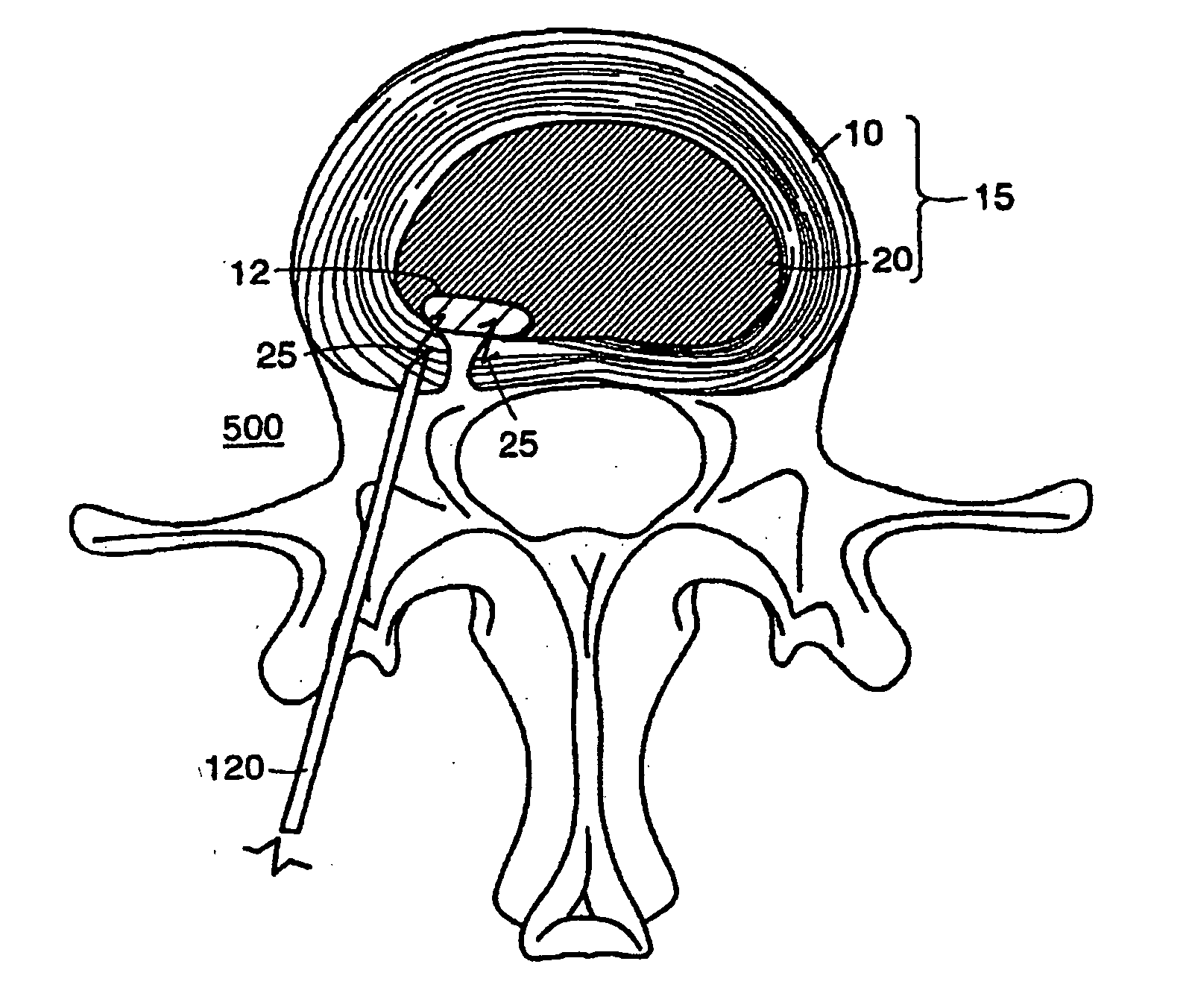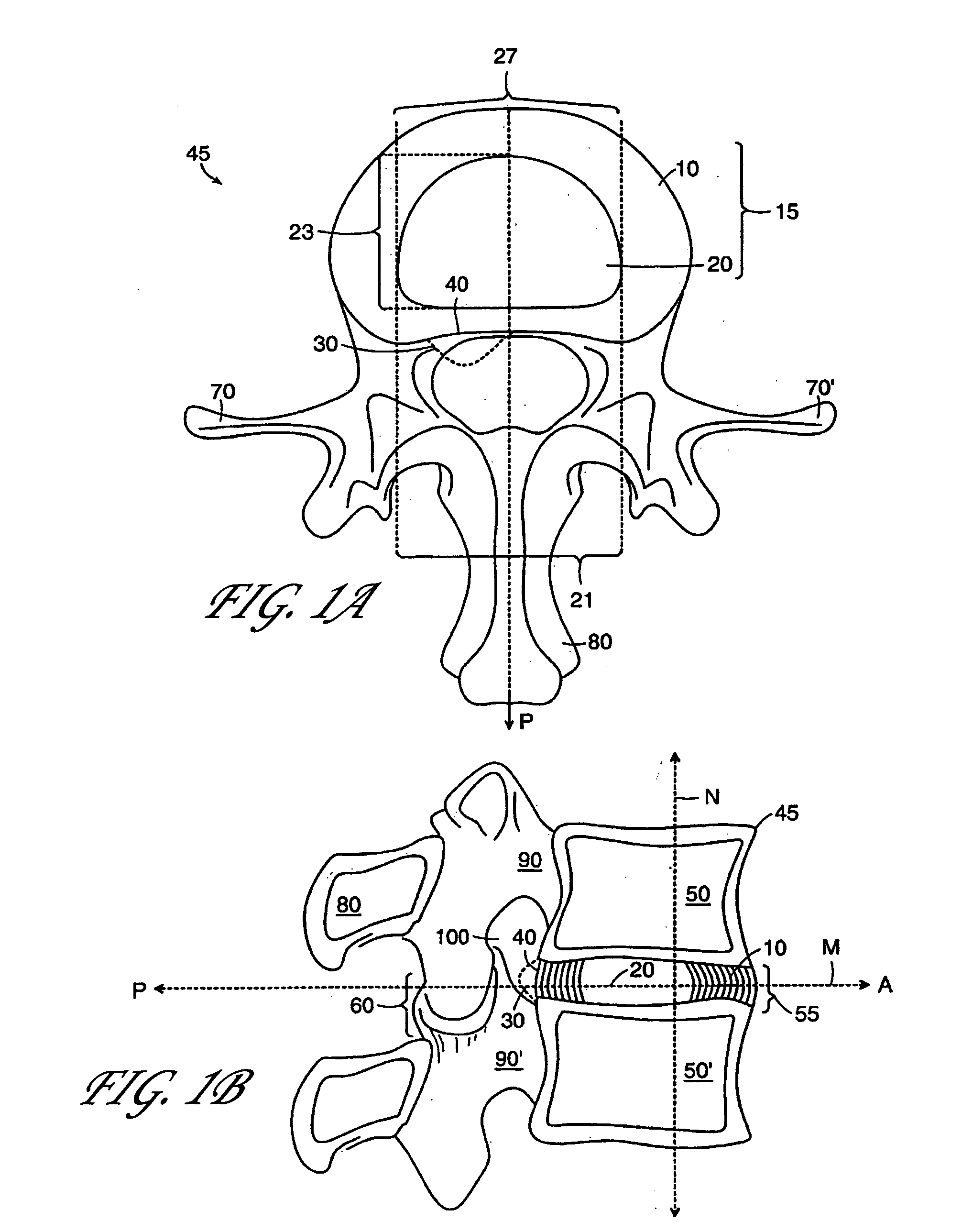Intervertebral disc herniation repair
a technology of intervertebral discs and herniation, which is applied in the field of surgical can solve the problems of patient slipping, insufficient treatment of intervertebral discs, and insufficient system and method treatment, so as to reduce disc height and pressure, prevent or minimize material extrusion, and restore biomechanical function
- Summary
- Abstract
- Description
- Claims
- Application Information
AI Technical Summary
Benefits of technology
Problems solved by technology
Method used
Image
Examples
Embodiment Construction
[0107] The present invention provides for an in vivo augmented functional spine unit. A functional spine unit includes the bony structures of two adjacent vertebrae (or vertebral bodies), the soft tissue (anulus fibrosis (AF), and optionally nucleus pulposus (NP)) of the intervertebral disc, and the ligaments, musculature and connective tissue connected to the vertebrae. The intervertebral disc is substantially situated in the intervertebral space formed between the adjacent vertebrae. Augmentation of the functional spine unit can include repair of a herniated disc segment, support of a weakened, torn or damaged anulus fibrosis, or the addition of material to or replacement of all or part of the nucleus pulposus. Augmentation of the functional spine unit is provided by herniation constraining devices and disc augmentation devices situated in the intervertebral disc space.
[0108]FIGS. 1A and 1B show the general anatomy of a functional spine unit 45. In this description and the follow...
PUM
| Property | Measurement | Unit |
|---|---|---|
| thickness | aaaaa | aaaaa |
| thickness | aaaaa | aaaaa |
| thickness | aaaaa | aaaaa |
Abstract
Description
Claims
Application Information
 Login to View More
Login to View More - R&D
- Intellectual Property
- Life Sciences
- Materials
- Tech Scout
- Unparalleled Data Quality
- Higher Quality Content
- 60% Fewer Hallucinations
Browse by: Latest US Patents, China's latest patents, Technical Efficacy Thesaurus, Application Domain, Technology Topic, Popular Technical Reports.
© 2025 PatSnap. All rights reserved.Legal|Privacy policy|Modern Slavery Act Transparency Statement|Sitemap|About US| Contact US: help@patsnap.com



